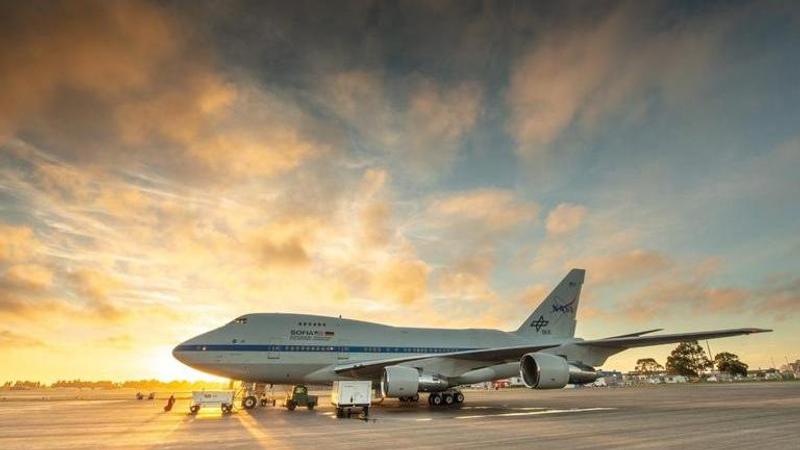Published 22:22 IST, September 30th 2022
NASA's flying SOFIA telescope retires; a quick look at the legacy it's leaving behind
NASA's SOFIA telescope has retired after its final flight from the Palmdale airport in California at 9:14 am IST and landed at 5:05 pm on September 29.

The SOFIA telescope, NASA’s flying observatory, has now retired after taking off in its final flight from the Palmdale regional airport in California at 9:14 am IST and landing at 5:05 pm IST on September 29. Operational since 2014, SOFIA is a modified Boeing 747SP jetliner that carries a 17,000-kilogram and 2.5-meter-wide telescope, a contribution of the German Space Agency (DLR). As SOFIA (short for Stratospheric Observatory for Infrared Astronomy) nears its retirement, here is a quick look at the legacy it leaves behind.
Discovery of water on the Moon
Despite not being configured to observe the Moon, SOFIA helped astronomers find water molecules on the sunlit side of the lunar surface in 2020. The water molecules were discovered in the Clavius Crater, one of the largest craters visible from Earth, located in the Moon’s southern hemisphere. Through this discovery, scientists confirmed that water may be distributed across the lunar surface, and not limited to cold, shadowed places.
Detecting the 1st type of molecules in the universe
In 2019, SOFIA also detected signatures of Helium hydride, the first type of molecule ever formed in the universe. It is said to have formed after the combination of hydrogen and helium about just 1,00,000 years after the big bang. This molecule was found in the planetary nebula NGC 7027, which is located 3,000 light-years away near the constellation Cygnus. NASA says that SOFIA’s astrochemistry also shed light on the way water gets distributed in the universe and that the mission also explored the life cycle of materials in space.
(Image of planetary nebula NGC 7027 with an illustration of helium hydride molecules; Image: NASA)
Analysing Pluto’s atmosphere
The telescope also allowed astronomers to analyse the atmosphere of Pluto when the planet passed between a distant star and the Earth during a rare event in 2015. Due to its mobility, SOFIA became the only observatory capable of positioning itself above terrestrial weather and directly in the centre of Pluto’s shadow. Owing to the observatory's ability to respond quickly, it was also able to capture the explosion of a star in 2014 which was the brightest and closest to Earth in decades.
(The first two images above show the central portions of galaxy M82 prior to the supernova explosion, while the right image shows Supernova SN2014J taken by the FLITECAM instrument on the SOFIA telescope; Image: NASA)
Studying Earth's atmosphere in a new way
According to NASA, scientists found a new way to study the Earth's atmosphere and climate using SOFIA which soared at an altitude between 38,000 and 45,000 feet from the surface. While it was safe from 99.9% of the water vapour in Earth’s atmosphere that obscures infrared observations from the ground, SOFIA still helped scientists to make direct measurements of atomic oxygen in our planet's upper atmosphere in 2021.
[Photo taken through SOFIA’s window during an observing flight from New Zealand. It also features the Milky Way (left) and twinkling Mars (right); Image: NASA/Ian Griffin]
This was significant because the Earth's upper atmosphere, the mesosphere and lower thermosphere, are the least understood regions. NASA says that the telescope observed a particular form of unbonded oxygen, known as atomic oxygen, which is distinct from the life-giving O2 found at the Earth’s surface.
In its eight years of service, SOFIA has been used to observe much larger entities such as black holes and even galaxies. NASA, in its official statement, revealed that SOFIA’s data from a total of 732 nights of observations through its lifetime will be publicly available for scientists to study and conduct further research.
Updated 22:22 IST, September 30th 2022






